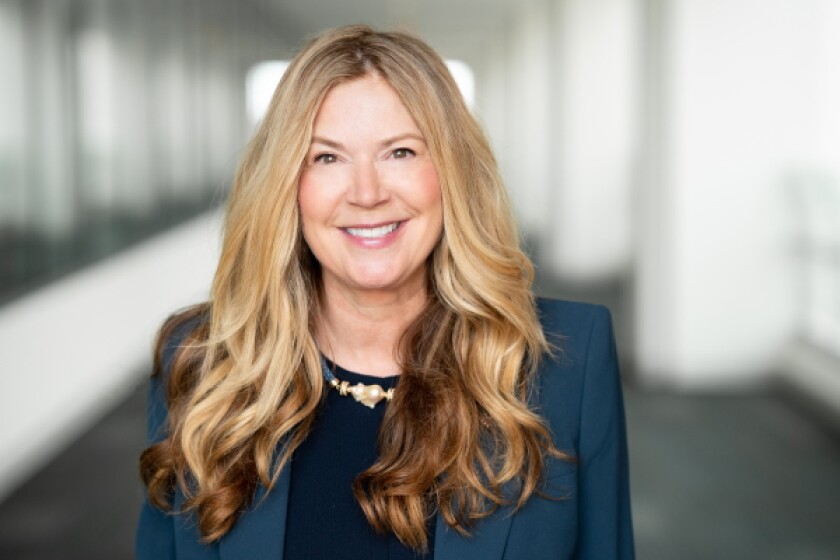Shortly before Kathi Vidal was confirmed as the USPTO’s new director last month, office sources told Managing IP that pro bono work would be a big focus for her once she arrived. Vidal had highlighted her desire to make this subject one of her priorities during pre-confirmation meetings at the office, they said.
And since taking her new job, she’s made good on her promise. Vidal said at the INTA Annual Meeting earlier this month that that the USPTO intended to scale up its 22 pro-bono programmes throughout the US.
The director has also reached out to several pro-bono focused organisations, including the New York Volunteer Lawyers for the Arts (VLANY), to set up a meeting and get their feedback.
But she’s done much more than that in just a short month in office, a spokesperson at the USPTO revealed exclusively to Managing IP this week. Vidal has made visits and reached out to the Court of Appeals for the Federal Circuit, the Pro Bono Advisory Council and WIPO, among other things.
The focus and efforts from the director have been welcomed by counsel and other professionals involved in patent pro-bono work. Katie Wagner, executive director at the VLANY in New York, says it’s great to have such fervent support from the USPTO chief so early on.
“The benefit of the USPTO’s involvement and dedication to the programme is it gives credibility, which is important because inventors know they have to keep their innovations secret and sometimes we get some resistance from them when they come into the programme,” she says.
Corey Salsberg, global head of IP affairs at Novartis and board member of California Lawyers for the Arts (another pro-bono group) in Washington DC, agrees that it’s good to have the director’s support at such an early stage.
“I should note that every USPTO director has made pro-bono an important topic. Dave Kappos, for example, inherited the first call for it after the America Invents Act (AIA) was passed and made this a passion project.
“But it’s fantastic that Director Vidal has made it clear that pro bono is a priority at the start of her job.”
Sources say Vidal could help best by getting more inventors and, perhaps more importantly, more lawyers involved in patent pro bono work. She could also consider putting more resource into programmes and setting up post-patent support systems, they say.
What she’s done
Vidal visited the Federal Circuit last week with a contingent from the USPTO to talk with Judge Jimmie Reyna about expanding pro bono. Reyna, who’s been at the appeals court since 2011, has long supported pro bono work.
She has also reached out to Jim Patterson and former director Kappos at the Pro Bono Advisory Council (PBAC) to invite them to have a discussion on how the USPTO could expand and scale of its pro bono efforts.
The PBAC, which was established by the AIA in 2011, has a core mission to assist the USPTO with the administration of patent pro bono programmes across the US.
The USPTO chief wants to work with external organisations, such as the VLANY and California Lawyers Association (CLA), across the US to identify barriers to broader pro bono participation and opportunities to expand support for under resourced innovators. She’s sent letters to those groups too.
On an international and cross-agency level, Vidal has had discussions with Daren Tang, director general at WIPO, Etienne Sanz de Acedo, CEO of INTA, and Shira Perlmutter, register of copyrights at the US Copyright Office on how to better work together to expand inclusive innovation.
She is working with the USPTO’s sister agencies within the Department of Commerce including the National Oceanic and Atmospheric Administration to ensure the office is doing everything it can to harvest and protect innovation.
The director has also reached out to law and engineering schools, including the University of Pennsylvania, Columbia, the University of Houston and Princeton.
She wants to determine how to scale the ability of law schools to provide pro bono services for IP and tech transfer, not just for their own engineering and science departments but for historically black colleges and universities and other schools and underrepresented communities too.
Vidal is also planning to meet with state governors and governor’s offices to talk about innovation and pro bono expansion as she travels the country.
The new director has also sent letters to a number of law firms asking them to participate in pro bono.
In the letter, shared with Managing IP, Vidal says: “I am sending this letter to call upon you, as one of America’s leading firms, to make participation in the USPTO’s patent pro bono programme a priority. To assist your efforts, we will be creating more opportunities for firms and practitioners who want to be actively involved in the programme.
“You and your colleagues only stand to benefit from helping broaden the availability of legal support for our traditionally disadvantaged groups. More inventors meaningfully participating in the innovation economy is essential for equity, job creation, and economic prosperity.”
What she needs to do
Alma Robinson, executive director at the CLA in San Francisco, says organisations such as hers can’t meet the demand. She points out that the CLA received 242 applications last year that qualified for pro bono assistance, but the organisation only placed a third of those (81) with lawyers.
“We don’t have enough attorneys to take all these cases,” she says. “It would be great if the USPTO could get the word out and get more attorneys to help out.”
Doug Nemec, partner at Skadden in New York and board member of the VLANY, agrees that more counsel should get involved, adding that Vidal could help by better communicating the existence of patent pro bono programmes and their benefits to counsel.
“I would say there’s a deficit of knowledge when it comes to pro bono on both sides. I routinely mention to people that Skadden does patent pro bono and their reaction is often: ‘Wow, that’s a thing?’.”
Salsberg at Novartis adds that it’s very important for the director make sure the need for patent pro bono work is well appreciated and understood among the patent bar and in-house counsel – although the latter group is somewhat limited in what it can contribute.
“She could make it clear how important the work is to the bar, the USPTO and the American economy. That would be a huge contribution alone, because it would come from the top and send a signal that the bar ought to be focused on this, to the extent that it’s not already.”
The other big thing the director could do is ensure resources are properly allocated, say sources. A litigation associate at a New York-based law firm says he isn’t sure there are gaps in pro bono funding, but that the USPTO could study where gaps might exist.
“I would fully support that,” he says.
The last major improvement Vidal might make is setting up some kind of programme to help pro bono clients manage their new assets once patents have been granted.
Sources point out that while getting a patent is no small achievement, it’s not the end of the road. If the invention is to improve American society, it needs to be commercialised, which requires investment and capital.
“In lots of cases, applicants need more than patents to fully realise the potential and value of their innovations,” says Salsberg.
Vidal is doing a lot to expand pro bono in the US and will in all likelihood work hard to improve the system based on knowledgeable feedback. But even if she just got the word out and raised the number of applications placed by a few percentage points, that would be a huge achievement.











